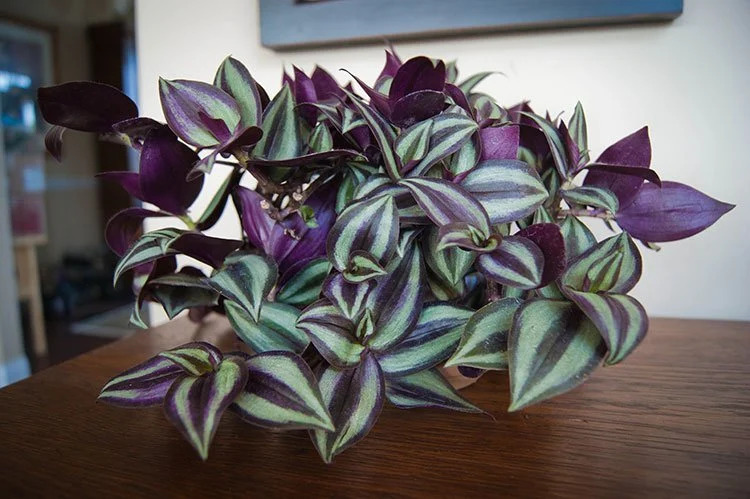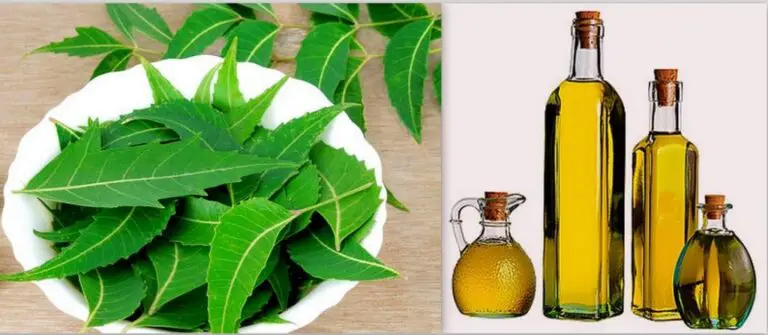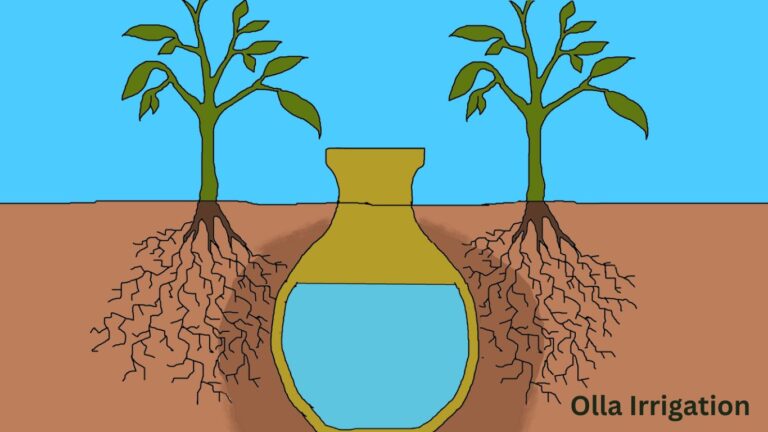Potato Plant Companions: 32 Perfect Partners
Table of Contents
Benefits of Companion Planting for Potato Plant
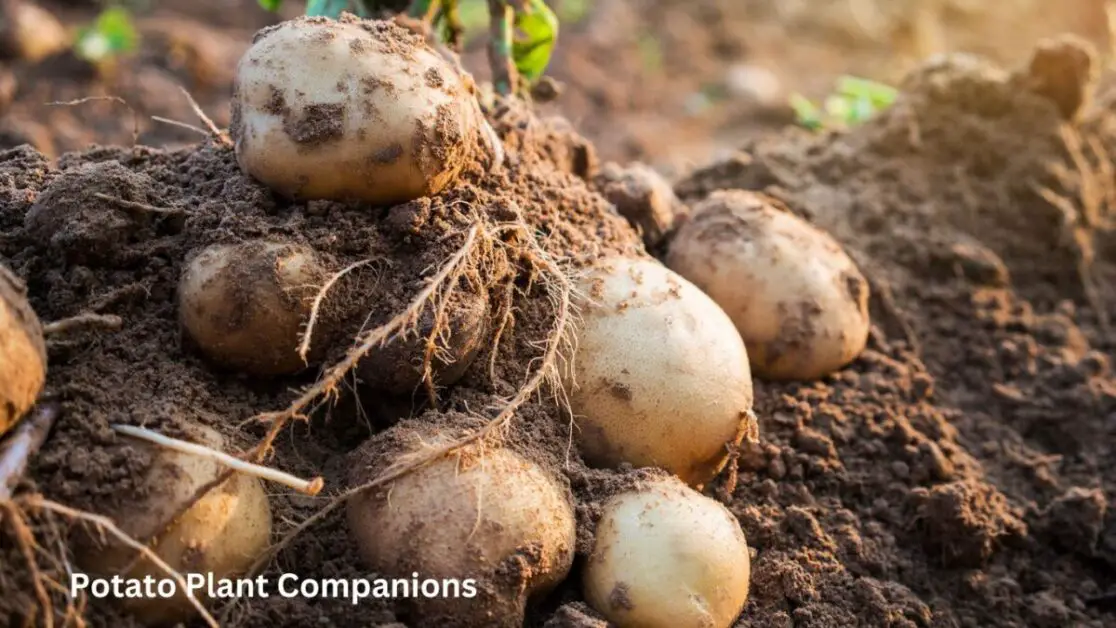
Companion planting offers numerous benefits for Potato Plant, beyond simply maximizing garden space. One of the primary advantages is the ability to naturally repel pests and diseases without the need for harsh chemicals. Plants like marigolds, for example, release compounds that deter harmful insects such as nematodes, protecting potato crops in an eco-friendly manner.
Moreover, certain companion plants can enhance soil health by fixing nitrogen and improving overall nutrient availability for potatoes. Legumes like peas and beans are excellent choices as they have the ability to convert atmospheric nitrogen into a form that plants can readily absorb, promoting healthier and more robust potato growth. By harnessing the power of companion planting, gardeners can create a thriving ecosystem that fosters the well-being of their potato crops.
The Role of Nitrogen-Fixing Potato Plant
Nitrogen-fixing plants play a crucial role in companion planting for potatoes by enriching the soil with this essential nutrient. Legumes, such as peas and beans, are well-known for their ability to convert atmospheric nitrogen into a form that can be readily used by plants. By interplanting nitrogen-fixing species alongside potatoes, gardeners can help ensure that their potato crops have an adequate supply of nitrogen throughout the growing season. This can lead to healthier plants, improved yields, and overall better quality potatoes.
In addition to providing a sustainable source of nitrogen, nitrogen-fixing plants also contribute to soil health by enhancing its structure and fertility. The presence of these plants encourages beneficial soil microorganisms to thrive, promoting a more balanced and resilient soil ecosystem. Furthermore, the increased nitrogen availability from these companion plants can reduce the need for synthetic fertilizers, supporting environmentally friendly gardening practices. By incorporating nitrogen-fixing species into their companion planting strategies, gardeners can create a harmonious and productive growing environment for their potato crops.
Companion Plants that Deter Potato Plant Pests
Planting certain companion plants alongside your potato patch can help deter common pests that plague potato crops. Marigolds, with their strong scent, are effective in warding off nematodes, beetles, and other harmful insects that target potato plants. Additionally, planting garlic near your potatoes can act as a natural pesticide, deterring aphids, spider mites, and other pests.
Furthermore, incorporating catnip into your companion planting scheme can help keep away flea beetles that can damage potato foliage. Catnip emits a scent that repels these pests, reducing the chances of your potato plants being infested. By strategically selecting these companion plants that deter potato pests, you can create a healthier and more robust growing environment for your potato crop.
Plants that Attract Beneficial Insects to Potato Plant Patch
Beneficial insects play a crucial role in maintaining the delicate balance of ecosystems within our gardens. By strategically incorporating plants that attract these helpful allies into your potato patch, you can promote a natural pest control system that benefits both your crops and the environment. Some plants, such as dill, coriander, and yarrow, are known to attract beneficial insects like ladybugs, lacewings, and parasitic wasps, which prey on common potato pests such as aphids and caterpillars.
These beneficial insects not only help keep pest populations in check but also enhance the overall health of your potato plants by reducing the need for chemical pesticides. By creating a biodiverse garden with a variety of companion plants that attract beneficial insects, you can create a thriving ecosystem that supports a sustainable and pesticide-free approach to potato cultivation. Additionally, planting flowers like marigolds and calendula alongside your potatoes can provide nectar and pollen for pollinators such as bees and butterflies, further contributing to the health and productivity of your garden.
Companion Potato Plant for Improving Soil Health
When it comes to improving soil health in your potato patch, selecting the right companion plants can make a significant difference. Certain plants have the ability to enhance soil fertility, structure, and overall health, creating a more suitable environment for your potato crop to thrive. Legumes, such as peas and beans, are excellent choices as they have the special capability to fix nitrogen in the soil, which is an essential nutrient for plant growth. By planting legumes alongside your potatoes, you can naturally enrich the soil with nitrogen, promoting healthier and more vigorous potato plants.
In addition to nitrogen-fixing plants, incorporating dynamic accumulators like comfrey can further enhance soil health in your potato garden. Dynamic accumulators have deep root systems that delve into the soil, mining valuable nutrients and minerals that are then brought up to the surface, making them accessible to other plants. Comfrey, known for its nutrient-rich leaves, can accumulate significant amounts of potassium, phosphorus, and other essential elements, benefiting not only the companion plants but also the potatoes in the garden. By strategically planting these soil-nourishing companions, you can create a robust and fertile growing environment for your potato crop.
Companion Plants for Enhancing Potato Plant Growth
When it comes to enhancing the growth of potatoes, selecting the right companion plants can make a significant difference. One such beneficial companion plant for potatoes is the marigold (Tagetes spp.). Marigolds not only add a pop of color to your garden but also release a chemical from their roots that can help suppress nematodes, which are known to affect potato growth negatively. Additionally, marigolds attract beneficial insects like ladybugs and lacewings that feed on harmful pests, contributing to a healthier overall ecosystem in your potato patch.
Another companion plant that can enhance the growth of potatoes is the chive (Allium schoenoprasum). Chives are part of the onion family and their strong scent acts as a natural pest repellent, deterring common pests that can harm potato plants. Moreover, chives require minimal care and their shallow roots do not compete heavily with potatoes for nutrients, making them an ideal companion plant for enhancing potato growth. By strategically planting chives alongside your potatoes, you can help improve the overall health and yield of your potato crop.
Plants that Help Suppress Weeds in Potato Plant Patch
Weeds can be a nuisance in a potato patch, competing with the potatoes for essential nutrients, water, and sunlight. However, there are several companion plants that can help suppress weeds and keep your potato patch healthy and thriving. Plants like marigolds, buckwheat, and clover are known for their ability to outcompete weeds due to their fast growth rates and dense foliage, shading out unwanted plants. Additionally, these plants can also improve soil health by adding nutrients and organic matter as they decompose, creating a more hospitable environment for your potatoes to grow.
Incorporating these weed-suppressing companion plants alongside your potatoes can not only reduce the need for manual weeding but also contribute to a more diverse and balanced ecosystem in your garden. By strategically interplanting these beneficial species, you can create a natural barrier against weeds while promoting a more sustainable and harmonious environment for your potato plants to thrive.
Companion Plants for Adding Aesthetic Appeal
Aesthetically pleasing companion plants not only add visual appeal to your potato patch but can also offer practical benefits to your garden ecosystem. Think beyond just functionality and consider incorporating plants that bring a pop of color, texture, and beauty to your potato growing area. Plants such as marigolds, with their vibrant blooms, not only brighten up the space but also help to deter pests with their natural insect-repellent properties. Additionally, ornamental plants like lavender or cosmos can attract beneficial pollinators, adding movement and life to the garden while supporting a healthy environment for your potatoes to thrive.
Another way to enhance the aesthetic appeal of your potato patch is by incorporating plants that offer varying heights and structures. Tall, graceful sunflowers can create a striking backdrop for your potato plants, while low-growing herbs like thyme or oregano can form a lush carpet of greenery that complements the sturdy potato foliage. The combination of different shapes and sizes in your companion planting design not only adds visual interest but also creates a harmonious balance in the garden. Experiment with different plant pairings to create a visually appealing tapestry of colors, shapes, and textures that will turn your potato patch into a picturesque oasis.
How to Plan a Successful Companion Planting Layout for Potatoes
Companion planting is a strategic approach to gardening that involves planting different species together to benefit each other in various ways. When planning a successful companion planting layout for potatoes, it is essential to consider the specific needs of potato plants and the characteristics of plants that can complement their growth. One key factor to keep in mind is the relationship between plants that can help deter pests that commonly affect potatoes, such as Colorado potato beetles and potato aphids. By strategically interplanting potatoes with companion plants known for their pest-repelling properties, you can create a more resilient and pest-resistant ecosystem in your garden.
In addition to pest control, incorporating nitrogen-fixing plants into your companion planting layout can also bolster the health and productivity of potato plants. Legumes, such as peas and beans, are excellent choices for this purpose, as they have the ability to fix atmospheric nitrogen into a form that is easily accessible to other plants, including potatoes. By strategically placing nitrogen-fixing plants in proximity to potatoes, you can enhance soil fertility and nutrient availability, leading to improved potato growth and yield. Careful consideration of plant compatibility, spacing, and growth habits is crucial when designing a companion planting layout that maximizes the benefits for your potato crop.
Plants that Provide Shade and Wind Protection for Potatoes
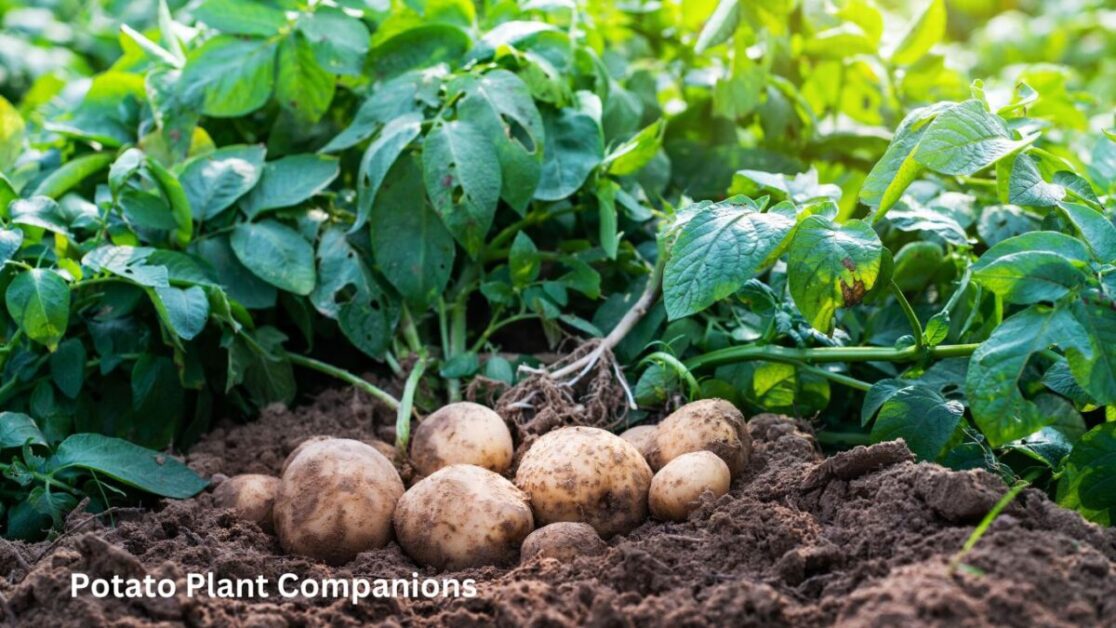
Potatoes, being sun-loving plants, benefit greatly from the shade provided by companion plants in the garden. Partnering your potato crop with taller plants that offer shade can help regulate the soil temperature, prevent excessive evaporation, and protect the delicate potato plants from scorching sun rays. Additionally, these shade-providing plants can contribute to creating a more balanced microclimate that fosters healthier potato growth and development.
In regions prone to strong winds, growing windbreak plants alongside your potato patch can shield the potato plants from damaging gusts. Wind protection is crucial for maintaining the structural integrity of potato plants and preventing physical damage that can hinder their growth and yield potential. Well-placed windbreak plants can act as a barrier, reducing the impact of strong winds and creating a more sheltered environment for your potatoes to thrive. By strategically incorporating these protective companion plants, you can enhance the overall resilience and productivity of your potato garden.
Companion Plants that Improve Potato Flavor
Potatoes are a versatile and beloved staple in many households, but did you know that certain companion plants can actually enhance their flavor? By strategically planting herbs and other compatible plants near your potato patch, you can not only boost the taste of your harvest but also create a more biodiverse and sustainable garden ecosystem.
One excellent companion plant for improving potato flavor is horseradish. Known for its pungent and spicy taste, horseradish can add a unique kick to your potatoes when grown in proximity. Additionally, the aromatic qualities of herbs like rosemary and thyme can infuse your potatoes with delightful savory notes, elevating their overall taste profile. Consider planting these flavorful companions alongside your potatoes to create a culinary garden paradise.
Plants that Help Enhance Potato Yield
Planting specific companion plants alongside potatoes can greatly enhance the overall yield of the potato crop. Some plants are known for their ability to attract beneficial insects that aid in pollination and pest control, leading to healthier potato plants and increased tuber production. Additionally, certain companion plants can help improve the soil structure by fixing nitrogen, providing essential nutrients to the potato plants, thus resulting in higher yields.
Furthermore, companion plants such as legumes can play a crucial role in enhancing potato yield by acting as living mulch, protecting the soil from erosion and excessive evaporation. This not only helps in conserving soil moisture but also creates a conducive environment for the potatoes to thrive and grow abundantly. By strategically selecting companion plants that support and nourish the potato crop, gardeners can maximize their potato yield and enjoy a bountiful harvest.
Companion Plants for Extending the Potato Harvest Season
To extend the potato harvest season, consider planting companion plants that can help stagger your harvest and prolong the period you can enjoy fresh potatoes from your garden. One effective companion plant for extending the harvest season of potatoes is bush beans. Bush beans mature relatively quickly, which can allow you to harvest some of the potatoes earlier while the beans continue to grow and fill in the space left behind by the potatoes. This not only maximizes the use of garden space but also provides a continuous harvest window throughout the season.
Another plant that can complement potatoes in extending the harvest season is Swiss chard. Swiss chard is a hardy vegetable that can thrive in cooler temperatures, making it an excellent choice for late-season growth when potatoes are nearing maturity. By interplanting Swiss chard with potatoes, you can extend your harvest well into the fall months. Additionally, the vibrant colors of Swiss chard can add visual appeal to your garden, enhancing the overall aesthetics of your potato patch.
Tips for Maintaining a Healthy Potato Companion Planting Garden
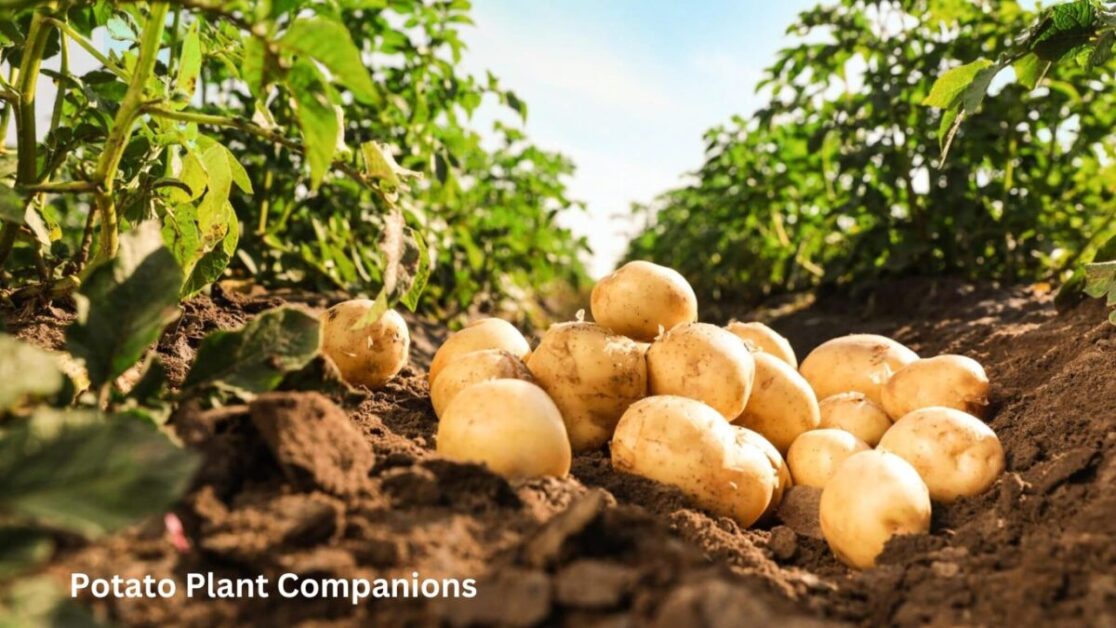
To maintain a healthy potato companion planting garden, it is essential to regularly monitor the health of both the potatoes and their companion plants. Check for any signs of pests, diseases, or nutrient deficiencies that may be affecting the plants. Implement a regular watering schedule to ensure that all plants receive adequate moisture, but be cautious not to overwater as this can lead to root rot. Additionally, keep a watchful eye on the growth and development of the plants to address any issues promptly and prevent them from escalating.
Proper spacing between the potato plants and their companions is crucial for allowing each plant to receive sufficient sunlight, water, and nutrients. Avoid overcrowding the garden by following the recommended spacing guidelines for each type of plant. Regularly prune back any overgrown or invasive plants that may be encroaching on the space of others. Remember that maintaining a balance in the garden is key to promoting plant health and maximizing the benefits of companion planting.
Here’s a table listing some common plants that make good companions for potato plants:
| Plant | Companion Benefit |
|---|---|
| Beans | Fix nitrogen in the soil, improve soil fertility |
| Cabbage | Repels pests like cabbage worms |
| Carrots | Deters pests, like carrot fly |
| Celery | Repels pests, enhances flavor |
| Chamomile | Improves flavor and growth |
| Chives | Repels pests, improves flavor |
| Corn | Provides support, can deter pests |
| Horseradish | Deters pests, improves growth |
| Marigolds | Deters pests like nematodes, adds color |
| Nasturtiums | Deters pests like aphids, adds color |
| Parsley | Attracts beneficial insects, improves flavor |
| Peas | Fix nitrogen in the soil, provide support |
| Radishes | Deters pests, improves soil structure |
| Spinach | Provides shade, can deter pests |
| Thyme | Deters pests, improves flavor |
| Tomatoes | Share space well, can repel pests like potato beetles |
| Basil | Deters pests, improves flavor |
| Sage | Deters pests, improves flavor |
| Tansy | Deters pests, repels ants |
| Eggplant | Deters pests, shares space well |
| Sweet Alyssum | Attracts beneficial insects, adds color |
| Oregano | Deters pests, improves flavor |
| Mint | Deters pests, improves flavor |
| Garlic | Deters pests like aphids, improves flavor |
| Onions | Deters pests, improve soil health |
| Peppers | Deters pests, adds variety |
| Borage | Attracts beneficial insects, improves flavor |
| Lovage | Deters pests, improves flavor |
| Dill | Attracts beneficial insects, improves flavor |
| Rosemary | Deters pests, improves flavor |
| Sunflowers | Provide shade, support, and can attract beneficial insects |
These are just a few examples of plants that can be good companions for potato plants, providing various benefits such as pest control, soil improvement, and mutual support.
Common Mistakes to Avoid when Choosing Potato Plant Companions
When choosing companion plants for your potato crop, it is crucial to avoid certain common mistakes that could hinder the success of your garden. One common error is not considering the specific needs and characteristics of potatoes when selecting companion plants. Potatoes thrive in well-draining, fertile soil with ample sunlight, so choosing companions that have conflicting requirements can lead to competition for resources and stunted growth for both plants. Another mistake to avoid is overlooking the potential interactions between companion plants, as some combinations may inhibit each other’s growth or attract pests that could harm the potato crop.
Furthermore, failing to plan for the entire growing season can be a misstep when choosing potato companions. Different plants have varying growth rates and lifecycles, so it is essential to select companions that will provide benefits and support to the potatoes throughout the entire growing season, from planting to harvest. Additionally, neglecting to consider the spacing requirements of companion plants can result in overcrowding, which may lead to increased competition for resources, reduced air circulation, and higher susceptibility to diseases. Planning ahead and carefully selecting compatible companions can maximize the benefits of companion planting for your potato crop.
Can I plant tomatoes as companions for potatoes?
No, it is not recommended to plant tomatoes as companions for potatoes as they both belong to the same plant family (Solanaceae) and may be susceptible to similar diseases and pests.
Is it advisable to plant sunflowers with potatoes?
Yes, planting sunflowers with potatoes can help attract beneficial insects to the potato patch and provide shade and wind protection for the potatoes.
Can I plant mint as a companion for potatoes?
It is not recommended to plant mint as a companion for potatoes as it can be invasive and may compete with the potatoes for nutrients and space.
Should I plant beans with potatoes?
Yes, planting beans with potatoes can provide nitrogen-fixing benefits to the soil, which can help improve potato growth and yield.
Is it a good idea to plant marigolds with potatoes?
Yes, planting marigolds with potatoes can help deter pests such as nematodes and beetles, making it a beneficial companion plant choice.


